What different types of window sashes are available for your custom new home?
 Once a purely functional consideration in a new home, advances in design and technology have seen windows elevated to a design feature with both functional and aesthetic properties. Driven by greater demands on energy efficiency and a move towards unique, statement custom homes, windows have evolved to become a key element in the design, functionality and liveability of a home.
Once a purely functional consideration in a new home, advances in design and technology have seen windows elevated to a design feature with both functional and aesthetic properties. Driven by greater demands on energy efficiency and a move towards unique, statement custom homes, windows have evolved to become a key element in the design, functionality and liveability of a home.
There are an incredible range of windows available to suit a broad range of functional and aesthetic preferences. While your designer will consider and direct the placement and size of the windows, the type of window, material, and to some extent glazing, will be decisions you will make. Understanding the vast number of options and choosing the best for the style and location of your home can feel overwhelming, but it doesn’t need to be.
In this article, we will explore some of the most widely used window sashes and how they can be used in your new custom home. It is important to note that these are the basic window configurations and can be scaled up or down, used in multiples, or paired with different options to create the custom style you are looking to achieve in your new home.
The Renmark Homes team are experts in custom home building and would be more than happy to assist you in selecting the best options for your new custom home.
Common Types of Windows Seen in New Homes
Sliding Windows
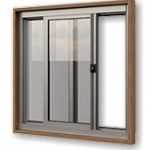 Materials:
Materials:
Aluminum
uPVC
Timber
The sliding window is a common option due to its versatility and affordability. These are mostly made in aluminium, are lockable, have fly screens fitted externally, and can accommodate double glazing. These windows slide open horizontally and offer a nice clear opening for good ventilation. They can feature two or more sashes and can be paired with a fixed pane of glass at bottom of the frame to lengthen the window cavity and maximise light. Aesthetically, a sliding window will look best in a larger size. They are considered an entry-level window and are most frequently used to the side and rear of the house to help keep costs down during a build.
Awning Windows
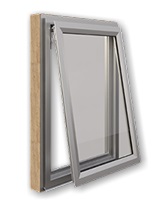 Materials:
Materials:
Aluminum
Timber
uPVC
A popular option in modern homes, an awning window is a stylish option that has hinges at the top and swings outwards from the bottom. While the opening is more restricted and may not allow for the same ventilation as other options, they seal well when closed, making them a great energy saving and weather proofing option. Due to the restricted opening, they are considered one of the more secure windows available. They are also lockable, usually come with keyed locks, and can accommodate external flyscreens. Awning windows can also accommodate double glazing to enhance their thermal properties.
Casement Windows
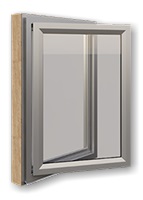 Materials:
Materials:
Aluminium
uPVC
Timber
Casement windows are a popular option when renovating older homes, or in reproduction French provincial and Georgian styles. Hinged from the side, they swing open like a door and can be hung either in a single or double configuration. When closed, casement windows have an almost airtight seal, making them a great energy efficient option. Casement windows can accommodate double glazing and are a good option for larger heavier windows. Flyscreens are not impossible to install, but they do need to be installed from the inside. Casement windows are one of the more expensive options available on the market.
Double Hung Windows
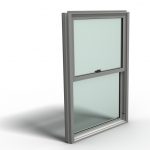 Materials:
Materials:
Aluminium
Timber
uPVC
Double hung windows open vertically and usually both sashes of the window will slide, allowing ventilation from the top, bottom, or both. The sliding mechanism of a double hung window is usually a spring-loaded track, which may not be able to handle the weight of double glazing in the sash. Screens can be easily installed on the outside of the frame, and key-operated locks usually come standard with these frames. Double hung windows are a classically versatile option and will compliment modern and traditional style homes. A variation of the double hung is the single hung where one sash is fixed and the other slides.
Sashless Windows
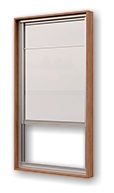 Materials:
Materials:
Aluminium
Timber
uPVC
A sashless window is a frame-less version of the single and double hung window. They are considered an architectural window and are often seen in more contemporary homes with minimalist styling. Sashless windows are one of the more expensive options and as such are used in specialist applications, to make a feature in a room, or to have scenic views unobstructed by frames. They can incorporate double glazing, and offer both vertical and horizontal opening.
Roof Windows
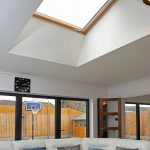 Materials:
Materials:
Aluminium
uPVC
Roof windows are often used in areas where it is difficult to get a window in an external wall. It is a fully functional window which can be opened for ventilation, with both manual and electronic mechanisms available to control the movement. Rain sensors and built-in shading devices are also available should you have the budget to automate with additional features. While a roof window will naturally give more light to a room, they are also exposed to direct sunlight for most of the day, which can make them good conductors of heat. Double glazing can improve the thermal properties of a roof window, as can its placement and maximising the orientation. If light is the key factor in the addition of a roof window, a sky light is a cheaper alternative without the ventilation properties.
Butt Joined Window
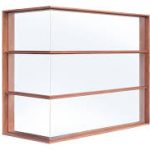 Materials:
Materials:
Aluminium
Timber
uPVC
A butt jointed window is a corner window where the glass butts into itself rather than a frame. It is used as an architectural feature in homes with a minimalist aesthetic and is a great way to capture un-obstructed views. One challenge is that a butt jointed window cannot accommodate double glazing, which makes them a significantly less energy efficient option, particularly for colder regions. Because there are no opening mechanisms, they are completely weatherproof and easy to maintain.
Louvre Window
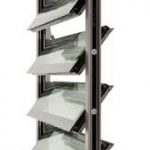 Materials:
Materials:
Aluminium
Timber
uPVC
Louvre windows are the best performing for ventilation, which is why you will see them used frequently in warmer, more tropical regions where cooling rather than heating is the priority. They can be easily adjusted to direct airflow and can be used in rooms with taller ceilings to facilitate ventilation and promote air circulation. While they are not the most secure window, there are lockable options available that will allow you to lock the louvres in place, whether open or closed. Louvre windows cannot accommodate double glazing, but there are a number of innovative tinting and frosting options available to enhance thermal and privacy properties.
Clerestory Windows
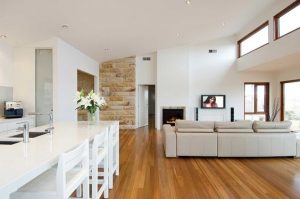 Materials:
Materials:
Aluminium
Timber
uPVC
Clerestory windows are a narrow-banded row of windows that usually sit high, just below the ceiling line of a building. They are used as both architectural and functional features in homes with high raked ceilings to bring extra light and ventilation into a space. Clerestory windows are an excellent way to get northern sun into south facing rooms. They are commonly fixed windows but can accommodate opening with manual or electronic mechanisms to facilitate ventilation. Clerestory windows can accommodate double glazing to enhance their thermal properties
Bi-folding Window
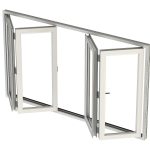 Materials:
Materials:
Aluminium
Timber
uPVC
While a bi-folding window is considered a specialist window, they have become popular options for their ability to open and connect two spaces. The bi-fold mechanism creates a large, unimpeded opening to facilitate a seamless transition from indoors to outdoors, allowing you to maximise a view or link your indoor and outdoor spaces – for example, the kitchen with an outdoor dining area. Because they are a series of independent sashes linked together, bi-fold windows can be made to any fit size, and open in your preferred configuration and direction. Bi-fold windows seal well to provide good thermal and acoustic insulation, and can accommodate double glazing. It is challenging to limit airflow with bi-fold windows, and also difficult to accommodate fly screens.
A Final Note About Windows for New Homes
The variety of window sash options available to compliment the design, style and functionality needs of your custom new home. The Renmark Homes team are specialist custom home builders and are ready to help you select the right windows to functionally and aesthetically compliment your new home.
